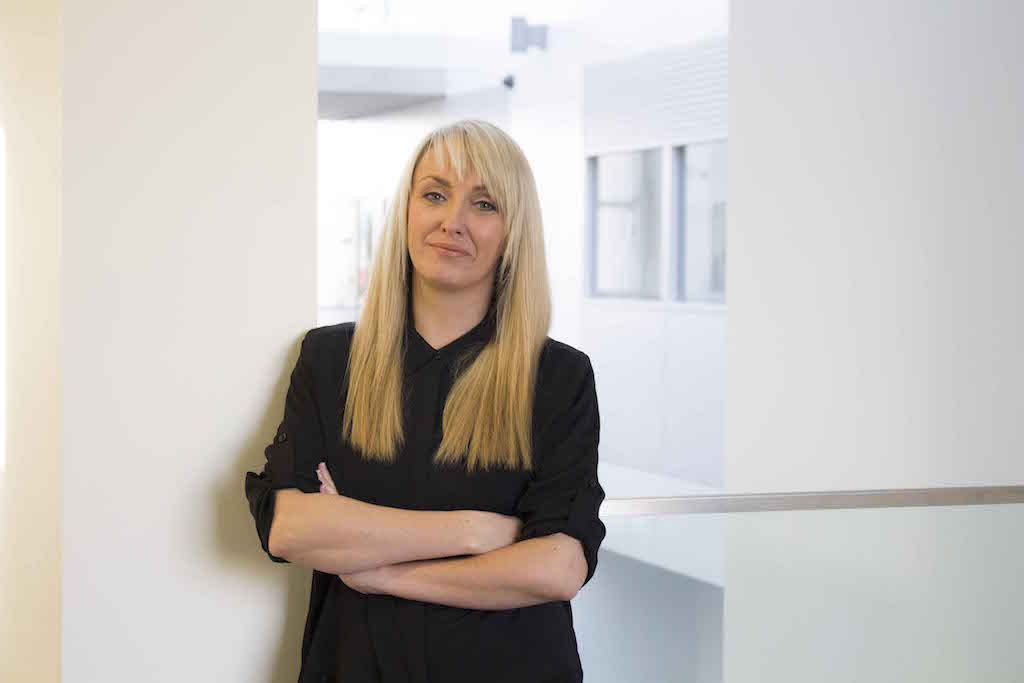Natasha Jen, an award-winning designer, educator, and a partner at Pentagram speaks to ThinkBusiness ahead of her talk on International Women’s Day.
An individualistic mentality defines design studio Pentagram in more ways than one. Operating a unique socialist business model, rather than a purely capitalist one, as well as its innovative use of graphic, verbal, digital, and spatial interventions that challenge conventional notions of media and cultural contexts, all give Pentagram unique appeal.
You have 23 partners at Pentagram working together and independently, how does that work and how important is it to the company’s success?
At Pentagram, each partner is autonomous as a design business, with different staff size, different overheads and different revenue targets. Within each office, the partners share general shared overhead: office rent, general admin, office supply, etc. Each partner would generate different revenues, depending on what they pursue and how they manage their staffing overhead. This setup, at first glance, is similar to different teams (studios) sharing an office.
What makes Pentagram unique is that the different revenues from different teams would get aggregated and redistributed equally back to each team, so it’s a socialist model. What this model does is essentially a very sophisticated check-and-balance. It first allows a partner – a designer – to define what he or she is interested in and they can shape their practice accordingly. It’s an incredibly individualistic kind of mentality. What keeps it in balance is the socialist economic model. While we pursue what we like to do, which may include things that are not profitable, we must keep in mind that our own profitability or unprofitability would affect other teams.
This business model is really simple mathematically, but behaviourally and psychologically more nuanced than a pure capitalist model. This is beyond simple friendship, it’s a true partnership psychology and that creates a collegial culture and that culture is what keeps Pentagram going.
How important is design in the way we live in 2019?
I think design has to be talked about specifically as opposed to generically. Generic “design” tends to end up being a feel-good word that, in the face of some of the biggest crises we face right now, feels superficial. There are real urgencies that each design field faces and there are shared crises, such as global warming, or the erasure of local culture in the age of social networks and global monopolies, or the paradox of algorithm, that it is benefiting us yet manipulating us. I don’t think we know how to answer those questions as a collective. I don’t. But that not-knowingness also sets a direction for years to come.
What has made Pentagram so successful?
I sometimes wonder if we’re just lucky. We are not a practice informed by conventional corporate models yet we are prolific. We’ve done celebrated work and we’ve done work that went under criticism. But what’s true in the history of Pentagram is that we are a creativity-led practice, and that’s the soul of the group.
How important is avoiding trends and designing instead for longevity?
It’s hard to say what are trends and what are timeless. Trends, such as the Chanel tweet jacket, can become timeless. I think it’s more important to think about how we respond to the challenges of our time than thinking about being trendy or timeless. That is for history to judge,
How has technology influenced design and do you as a designer embrace it or feel you have to fight it?
Technology, similar to the word ‘design’, has specificity to it that it’s hard for me to answer generically. Digital technology pretty much has consumed everything we do and communication design, my field, is a sub-set in that totality. Technology has its way to erase uniqueness and encouraging sameness, and that’s what we work against. I don’t like to think that I am “fighting” as I have no power to set the rules in the big currents of technological developments; I tend to think that there are choices that we can make and that we don’t have to feel that we are victimized by tech.
How important is keeping control of your work and how can you do this in a busy and large company?
There’s never a case where I can say we’re “controlling” the outcome. Design service is a messy process and clients, regardless of how much or little they have training in design, get their hands dirty in the process with us. This is not to say that we’re not the author in the final outcome, it’s that the outcome is never as pure as a fairytale. But people are people: we can be genius and we’re also flawed. For me I try to understand the people condition the best I can so the work can be conceived in the most communicative way possible.
Natasha will be delivering a keynote speech at the WhyDesign International Women’s Day event in Dublin on Friday, March 8th.
Interview by Olivia McGill.






